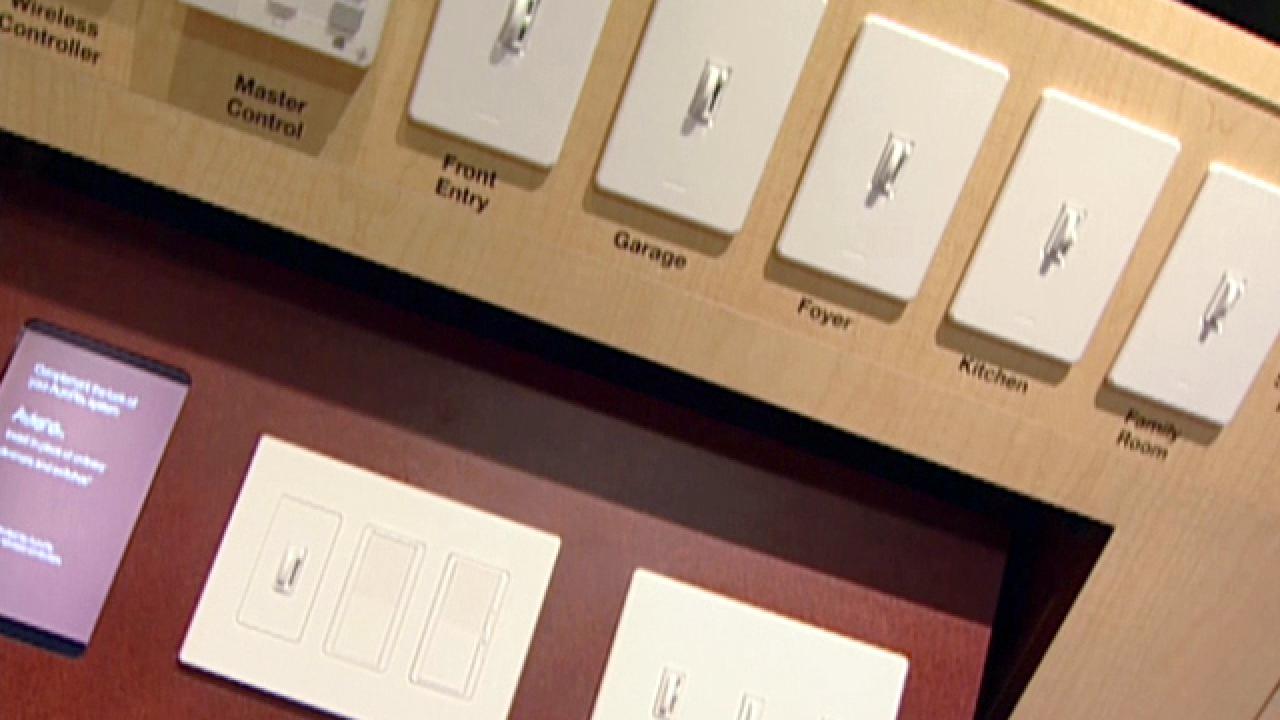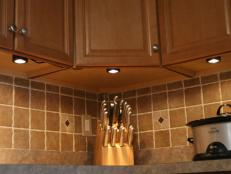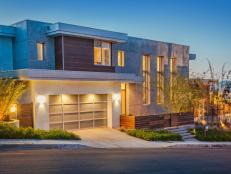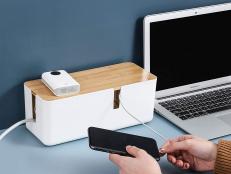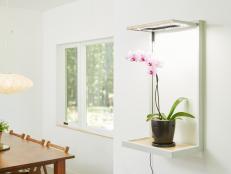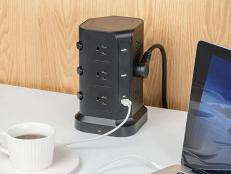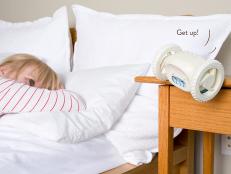Light Bulb Buying Guide: How to Pick the Right Light
LEDs, CFLs, fluorescents and incandescents: learn where each bulb works best.
Each light bulb has its pros and cons, and certain bulbs work better in different spaces of a home. Our light buying guide takes a deeper look at the different bulbs to see where each should be used.
LED Lights
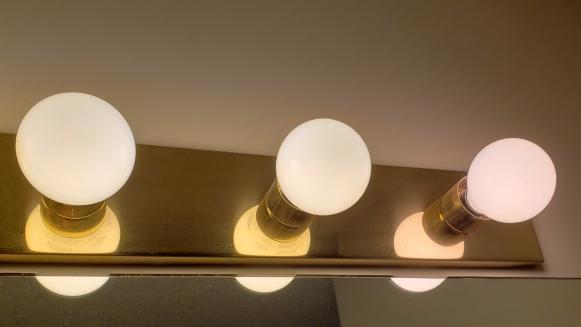
These days, it's hard to tell LED bulbs from incandescents. In this photo, the bulb on the far right is an 18-year-old incandescent. The other two are LEDs.
LED stands for "light-emitting diode." This lighting technology is extremely energy-efficient, and it's the one you're most likely to find at the store these days. LEDs can provide both directional and diffused light, making them great for under-counter task lighting as well as overall room illumination. Prices are competitive with most other energy-efficient technologies, but LEDs are still more expensive than many task-specific incandescent bulbs such as nightlights and appliance lights. While these bulbs usually last longer than incandescents, non-dimmable bulbs may burn out more quickly in areas with frequent power fluctuations. As such, you may want to err on the safe side and purchase dimmable bulbs. In addition, you can now find WiFi-enabled LED bulbs that work with Google Home, Alexa and other "smart" devices that allow you to brighten and dim lights - and even change their colors - just by speaking.
Shop for LED Lighting Solutions
CFL Lights
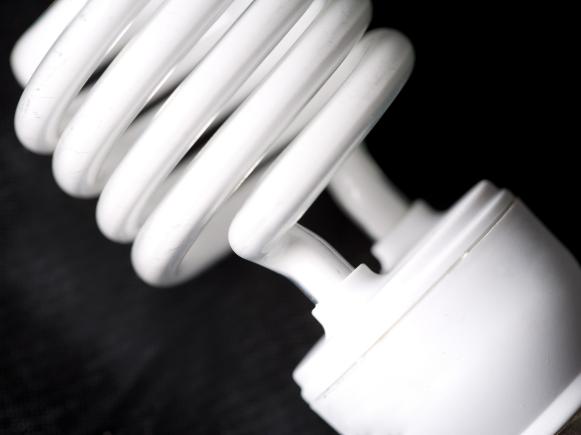
Compact fluorescent light bulbs are an easy way to adopt energy saving practices in the home.
Compact fluorescent bulbs (CFLs) consume a quarter of the energy that incandescent bulbs do and last 10 times longer. Unlike the old fluorescent lights, CFLs are quiet, instant-on and have warmer, color-corrected tones. They can be used anywhere you would use a typical incandescent light bulb. CFLs contain trace amounts of mercury, a harmful substance. Although the bulbs contain far less mercury than other household items, care needs to be taken to prevent breakage. Also, when CFLs burn out, they should be recycled.
Shop for CFL Bulbs
Fluorescent Lights
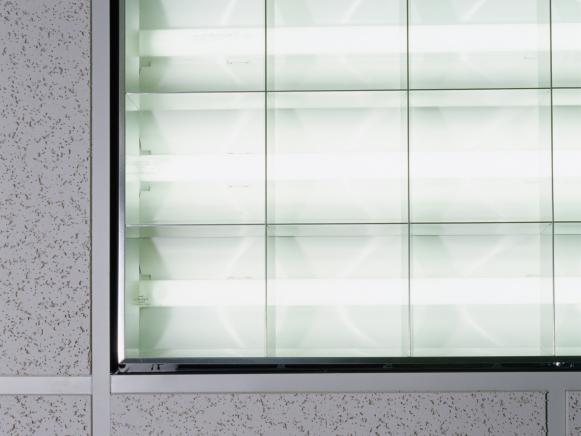
Fluorescent lighting is a common ceiling lighting choice.
The typical fluorescent bulb gives a flat, cold light that's often bluish and harsh. It is a daylight-equivalent and cannot be put on a dimmer. There are many types of fluorescents on the market: warm ones, cool ones and special-colored ones, and they typically produce more light and last longer than incandescent. Fluorescent bulbs work well to light large areas like basements or attics.
Shop for Fluorescent Lights
Incandescent Lights
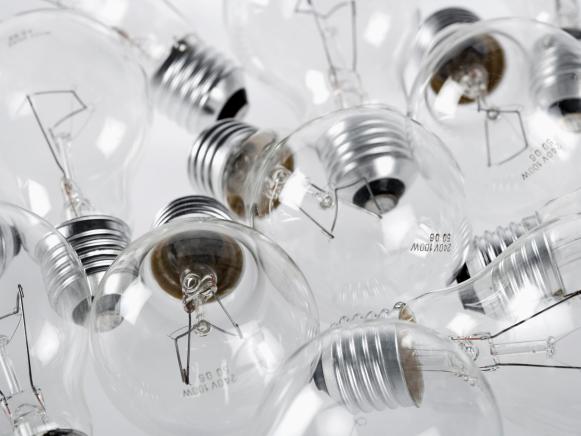
Incandescent bulbs are usually found in specialty applications these days.
Formerly the most common type of bulb, incandescents produce a warm, inviting quality and are very complimentary to skin tones. Incandescent bulbs usually last between 700 to 1,000 hours and can be used with a dimmer; however, they're not as energy efficient as other options. Household incandescents are becoming harder to find, but they're still available as specialty bulbs for vanities, nightlights, ceiling fans, etc.
Shop for Incandescent Bulbs
Halogen Lights
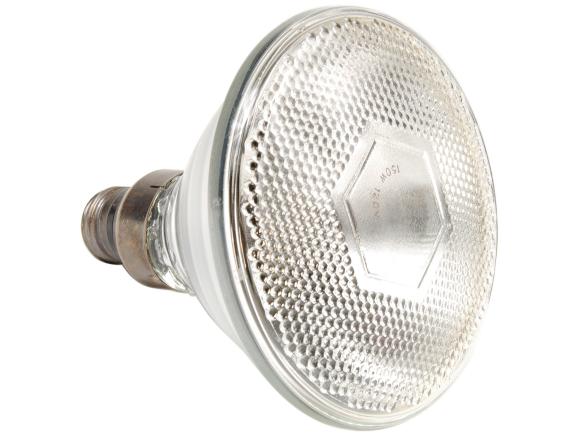
Halogen light bulbs cast bright light and last longer than standard bulbs.
Halogen bulbs are a type of incandescent that gives a close approximation of natural daylight, known as "white light." Colors appear sharper under halogen light and the bulbs can be dimmed. They're a little more energy efficient than incandescent bulbs, but they're more expensive and burn at a higher temperature. Most often halogen bulbs are used in under-cabinet lighting, pendant lights and recessed cans. Remember not to use bare hands when changing the halogen bulb. The smallest residue of oil from a human hand can rub off on the bulb, creating an atmosphere where the bulb warms too quickly when the lamp is turned on, which can cause the bulb to explode.
Shop for Halogen Bulbs
